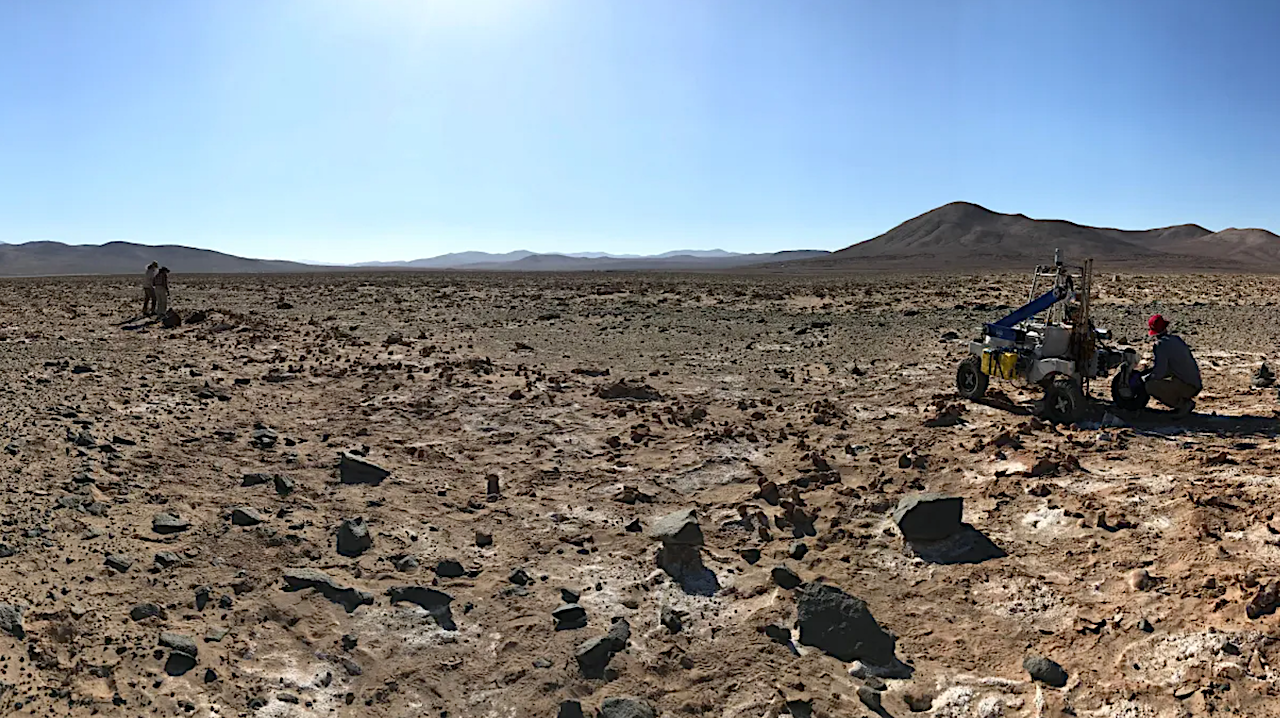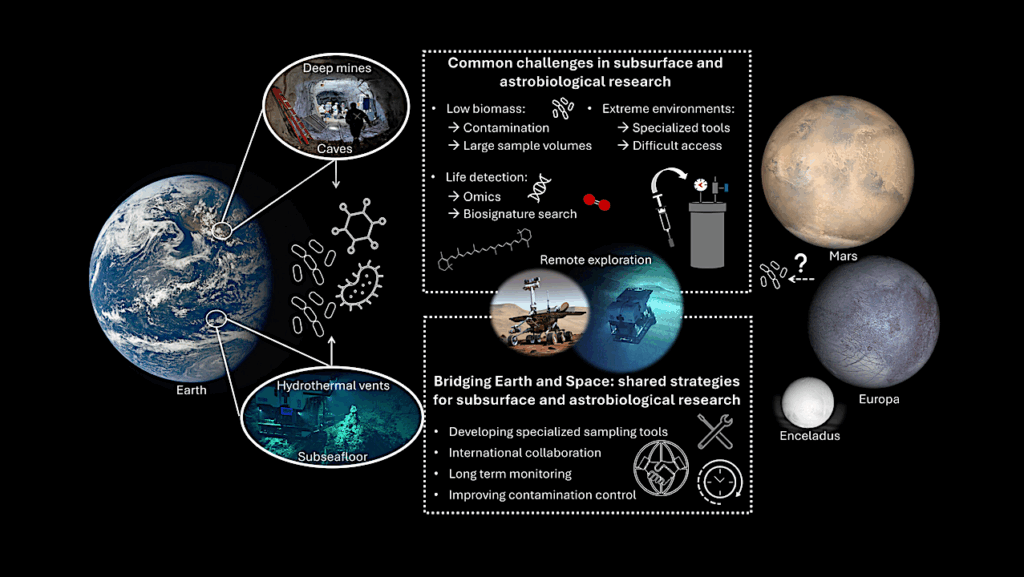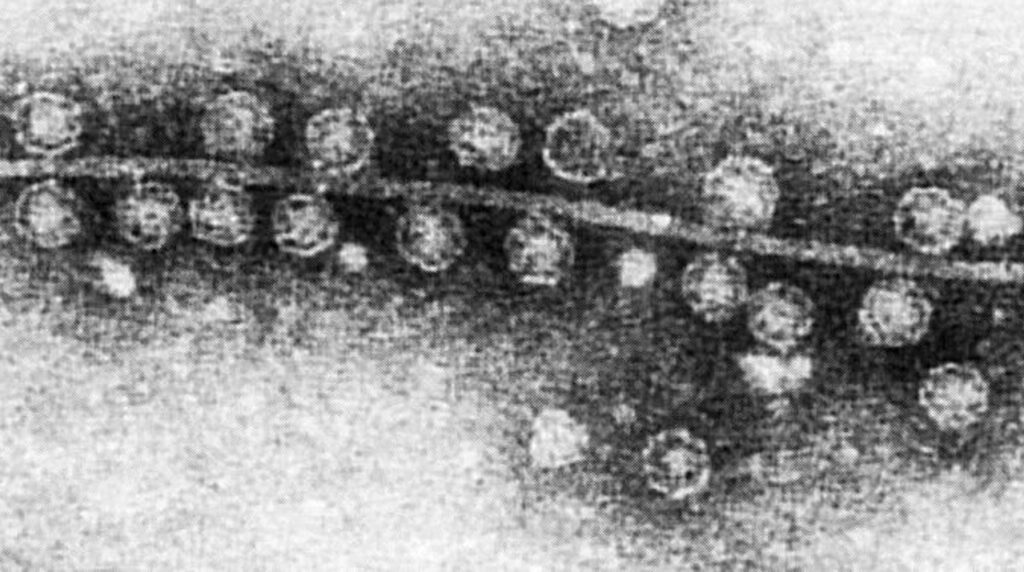Life Detection and Microbial Biomarker Profiling with Signs of Life Detector-Life Detector Chip During a Mars Drilling Simulation Campaign in the Hyperarid Core of the Atacama Desert

The low organic matter content in the hyperarid core of the Atacama Desert, together with abrupt temperature shifts and high ultraviolet radiation at its surface, makes this region one of the best terrestrial analogs of Mars and one of the best scenarios for testing instrumentation devoted to in situ planetary exploration.
We have operated remotely and autonomously the SOLID-LDChip (Signs of Life Detector-Life Detector Chip), an antibody microarray-based sensor instrument, as part of a rover payload during the 2019 NASA Atacama Rover Astrobiology Drilling Studies (ARADS) Mars drilling simulation campaign. A robotic arm collected drilled cuttings down to 80 cm depth and loaded SOLID to process and assay them with LDChip for searching for molecular biomarkers. A remote science team received and analyzed telemetry data and LDChip results.
The data revealed the presence of microbial markers from Proteobacteria, Acidobacteria, Bacteroidetes, Actinobacteria, Firmicutes, and Cyanobacteria to be relatively more abundant in the middle layer (40–50 cm). In addition, the detection of several proteins from nitrogen metabolism indicates a pivotal role in the system. These findings were corroborated and complemented on “returned samples” to the lab by a comprehensive analysis that included DNA sequencing, metaproteomics, and a metabolic reconstruction of the sampled area.
Altogether, the results describe a relatively complex microbial community with members capable of nitrogen fixation and denitrification, sulfur oxidation and reduction, or triggering oxidative stress responses, among other traits. This remote operation demonstrated the high maturity of SOLID-LDChip as a powerful tool for remote in situ life detection for future missions in the Solar System.

The sample retrieved from below ground by the rover’s drill is automatically transferred into the metal scoop at the end of the long, blue robotic arm. The soil is then passed through the funnels on the rover’s top platform to several life-detection instruments below that will analyze its contents. NASA and its partners are developing tools and techniques for future exploration of Mars and testing them in Chile’s Mars-like desert. NASA/Ames Research Center/Dominic Hart
Life Detection and Microbial Biomarker Profiling with Signs of Life Detector-Life Detector Chip During a Mars Drilling Simulation Campaign in the Hyperarid Core of the Atacama Desert, Astrobiology (open access)








